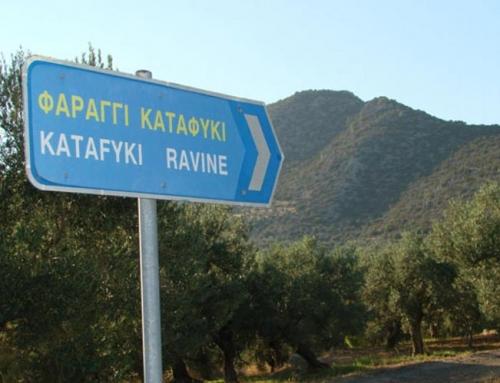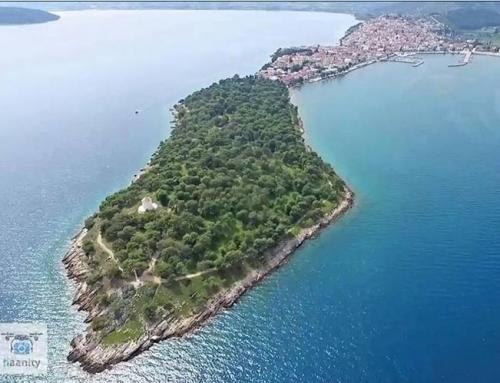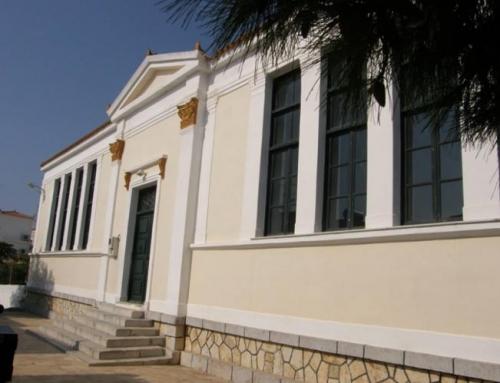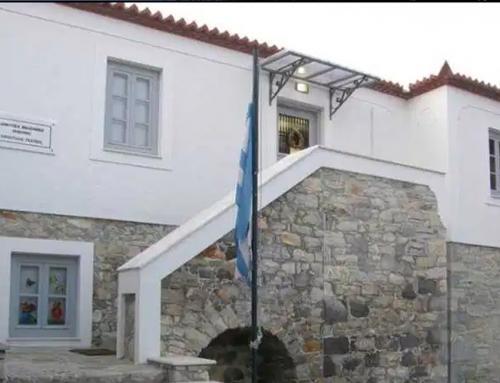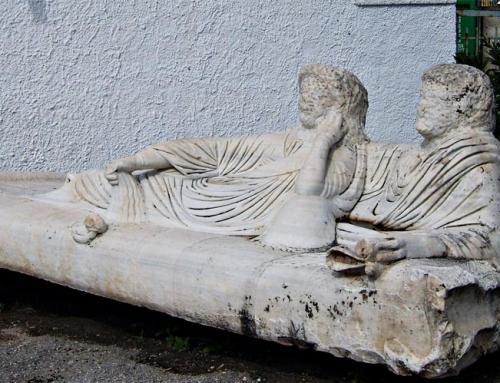Franchthi Cave is located in southwest Argolis, on the north coast of the bay of Koilada. It was inhabited mainly during the Upper Palaeolithic (40-10,000 BC), Mesolithic (9-7,000 BC) and Neolithic periods (7-3,000 BC). The cave has a towering vaulted ceiling, reaching 40 metres high in the centre, while the great shaft is 100 metres long. The floor is decorated with small stalagmites. Thomas Jacobsen’s excavations have shown that man settled there during the Late Palaeolithic period, i.e. 25 000 years ago. In the Palaeolithic and Mesolithic periods, Franchthi was a shelter for travelling hunters, gatherers and fishermen, who used tools made of hard and sharp stones, such as flint and obsidian, for their daily needs. The Mesolithic period is particularly important for the history of the cave, as it is associated with social and economic changes. The first burials, and the first open sea voyages took place and the first examples of systematic fishing appeared.
In the Neolithic period, habitation extended outside the cave to the adjacent open space. Most of this settlement, called Paralia, is now submerged due to rising sea levels. The cave and the open space were the place of activity of a community of farmers and stockbreeders, who maintained contacts with many areas of the southern Aegean. The inhabitants of the settlement used a variety of stone tools, such as scythe blades, knives, arrowheads, millstones, axes and picks, but also many bone tools, such as hooks, spatulas and picks. Many items from their everyday toolbox have not survived due to their perishable nature. To serve their daily needs, the inhabitants had arranged the interior of the cave into individual areas of use, some of which contained cobblestone floors or fireplaces.
Outdoors, their houses were simple structures with stone foundations, floors of pressed clay and walls plastered for insulation and cleanliness. Both the cave and the open space were occasionally used as burial sites. One of the innovations of the period is the construction of vases and figurines made of baked clay. Some of the vessels were elaborately decorated with colourful ornamentation.
Like their predecessors, the Neolithic inhabitants of the cave took care of their beauty by making jewellery from simple natural materials, such as sea shells. At the end of the 4th millennium and the beginning of the 3rd, a great earthquake swept through the whole area and caused great destruction. Then the cave of Franchthi, which had become one of the most important cultural centres of prehistoric Greece, was destroyed. During most of the 20th century the cave was used as a seasonal fold. Archaeological researches in the settlement were carried out between 1969-1979 by Indiana University (USA), under the auspices of the American School of Classical Studies in Athens.
The excavation programme was implemented by the Ephorate of Palaeoanthropology-Speleology of Southern Greece. Since 2013, the cave is now open to visitors after the completion of the restoration and development of the cave, through funding from the NSRF programmes. The visitor arriving at the village of Fournoi and the beach of Lampagianna after about 15 minutes, reaches the entrance of the cave, after crossing the path that leads to the cave, which is now visible and the route is marked with red arrows. It is also possible to visit within 10 minutes by boat from the Valley (Koilada). The area inside has been very well designed so that the visitor is safe (wooden walkway and protective wire) and has the right information (there are information signboards in many places in the cave).

